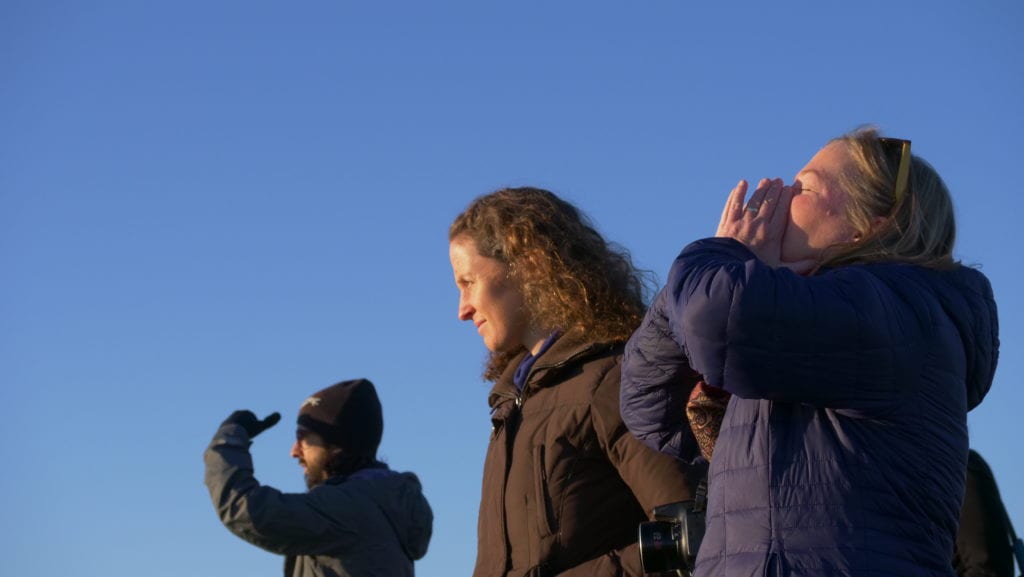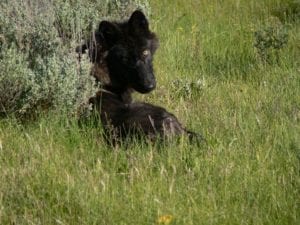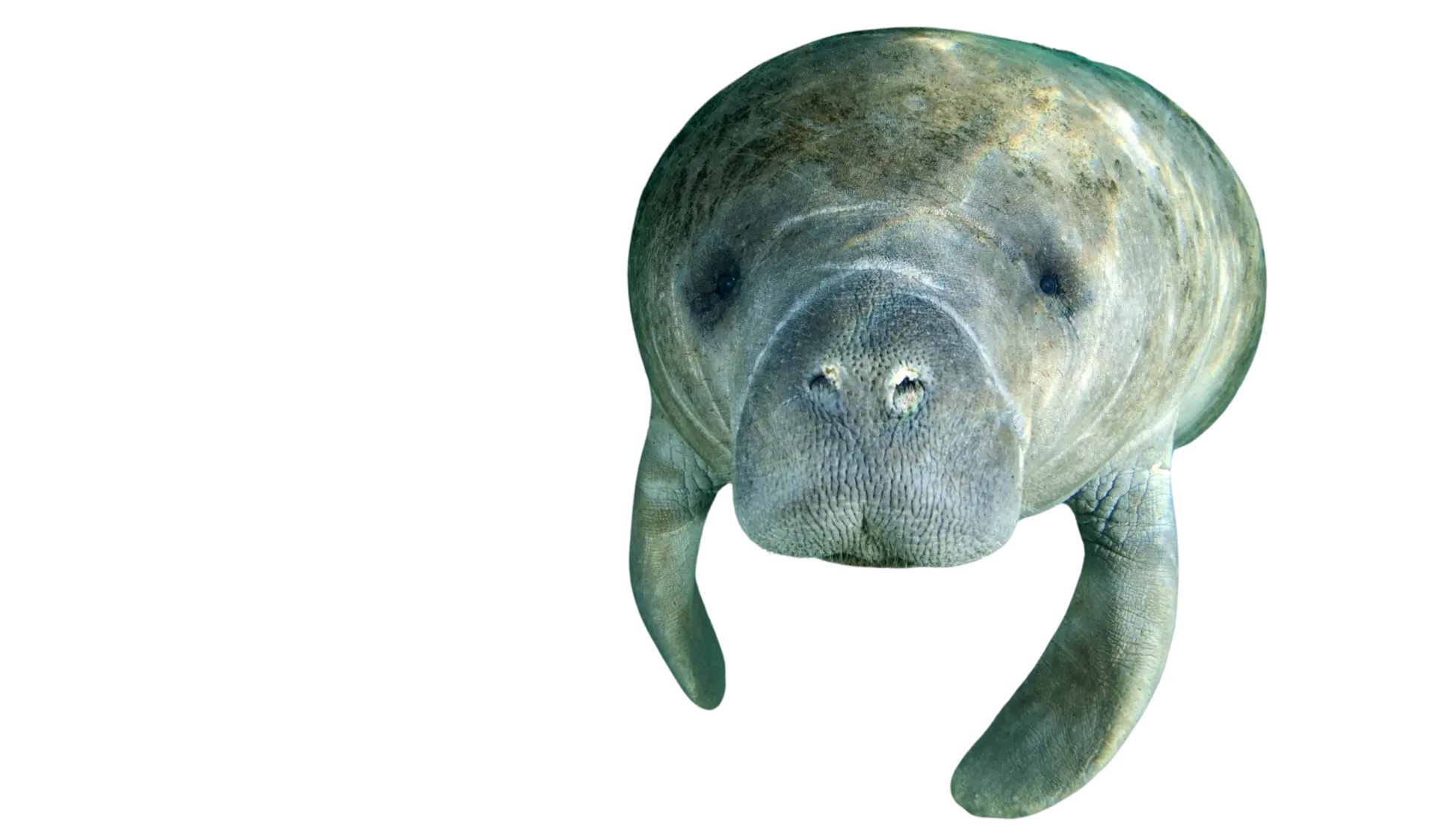My first experience with wolves in Idaho’s remote mountain wilderness was a lesson that framed my career working to restore them. It was in 1991, nearly 60 years after the last wolf was killed in Idaho. A few wolves would occasionally disperse from Canada down into the Rockies. Some had established small families known as packs outside of Glacier National Park in Montana but there were no known wolf packs in Idaho.
I was a college intern for the U.S. Fish and Wildlife Service in charge of mapping the rare public sightings of wolves in hopes of finding the first wolf family in Idaho. Wolves were still considered a menace to livestock by the ranchers and a danger to those who didn’t realize that Little Red Riding Hood’s archvillain was nothing like the real animal. Wolves are highly intelligent, loyal, dedicated loving parents, and play an essential role in reducing disease and overpopulation in elk and deer herds.
Standing under the twilight sky surrounded by forest and meadows on the wilderness boundary, I howled several times imitating the wolf’s distinct song. It is a technique used to search for wolves: they often respond to strange wolves as a means for establishing their territory. I couldn’t count how many times I had heard only silence or the occasional elk bugle back in response to my howling surveys. I listened for a while and then returned to my campsite a few hundred yards away.

As I collected wood to build a fire, the woods filled with the most beautiful sound. An ancient song that had been missing from these forests for most of the last century. I grabbed my tape recorder and began documenting it. The wolves howled again and again. It was dark now, but I could tell they were howling toward the same spot I had been howling from earlier that evening. By then, tears were streaming down my face as I realized that I had finally found them. The first wolf family after so many decades of silence.
As their last howl descended to silence, I found myself howling again to them in hopes they would respond again. As my howl ended, the wolves vigorously howled back. Soon, our howls were overlapping back and forth until I heard a sudden warning bark and the wolves fell silent. Minutes later the headlights from a truck, the source of their concern, came bouncing down the road and passed by completely unaware of the magical exchange that had just been interrupted.
A few weeks later as we searched for the pack, we found a young silver and black female wolf intentionally poisoned in this same area. She survived long enough for us to airlift her to an animal hospital, but died the next day. We never found the rest of the pack but it’s likely they met with the same tragic fate. Ranchers still considered them to be a threat and the “Shoot, Shovel and Shut Up” mantra was their response to the return of the wolf. I knew then that the only way that wolves would be safe is by resolving the conflicts with the ranchers who control many of our nation’s wild places and local politics. Since that time, I have worked closely with agency wildlife managers, ranchers, wolf conservationists, and community members to demonstrate that nonlethal methods to build coexistence between wolves and ranching operations are more effective at protecting livestock and ensuring the wolf’s valuable role in the wild. Our research is being duplicated worldwide and with other species that are threatened by human misunderstanding resulting in persecution.
Wolves are among the most persecuted species in the world, but they are not alone. Any wildlife that is perceived as a threat to human activities often meets the same end. And while wolves have been eradicated from much of their range, other species have been driven to extinction due to conflicts with people. From tigers to turtles, koala to whales, and great apes to butterflies, the earth is losing her wild children and wild places at levels never seen before during human existence. And with these extinctions, we are eroding the very foundations of our economies, livelihoods, food security, health, and quality of life worldwide.

It is not too late to make a difference, but only if we start now, at every level, from local to global. Through ‘transformative change’ that works with nature instead of against her, we can conserve, restore, and live sustainably. We can coexist!
That is why we have established the International Wildlife Coexistence Network. To create a community of scientists, educators, communities, government and business leaders, wildlife activists, agricultural managers, ethicists, social science and technology experts, field researchers, and more who share a common commitment to helping people coexist with nature. Coexistence means transformative change. It means a fundamental, system-wide reorganization across technological, economic, and social factors, including paradigms, goals and values at the ground level and up.
We were all moved by the support for our launch on January 23, 2021. We had participation from all over the world for our launch including Argentina, Australia, Belgium, Belize, Brazil, Canada, Denmark, Finland, France, Germany, India, Israel, Kenya, Nepal, Netherlands, New Zealand, Poland, Spain, Tanzania, and the USA. Our hero, Jane Goodall provided a precious gift of a video endorsement of our organization. We have experts joining our Coexistence Council from all over the globe. They are eager to share their knowledge and expertise with others to advance coexistence. And we have received support from old and new friends which has warmed our hearts and powers us forward.
Together, we will advance the tools and techniques we know work, and continue to explore new ones. We will share our research and knowledge with communities who seek to peacefully resolve conflicts with wildlife. When possible, we will connect our experts with communities that need help transforming wildlife conflicts into non-violent sustainable solutions.
We can and are changing the course of history. It is the best hope for our planet and for ourselves. We hope you will join us. Take the Pledge to embrace a coexistence consciousness with others. Volunteer as an expert. Or get involved at the local level. Introduce others to IWCN by sharing our launch video on social media and donate what you can.

